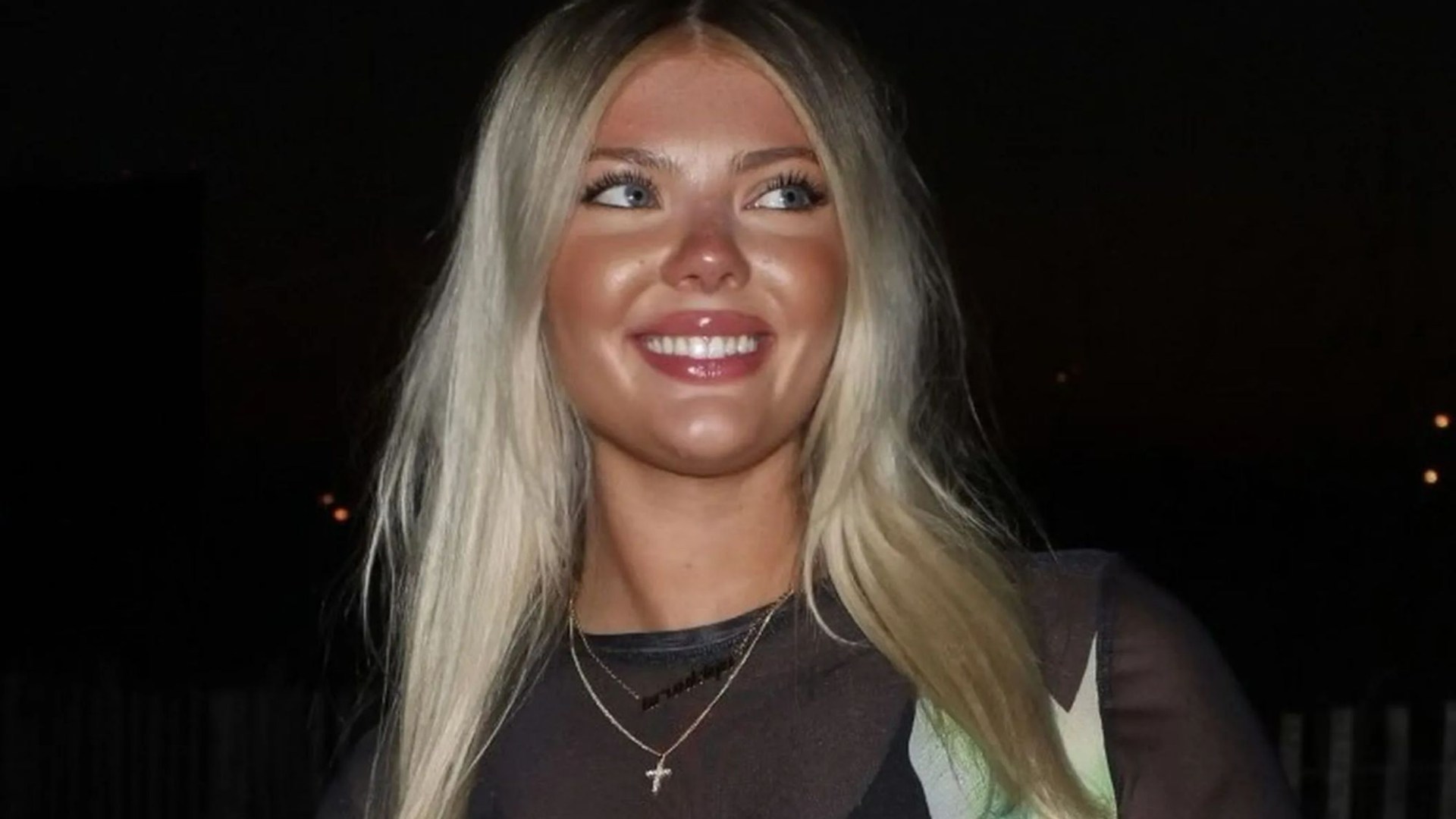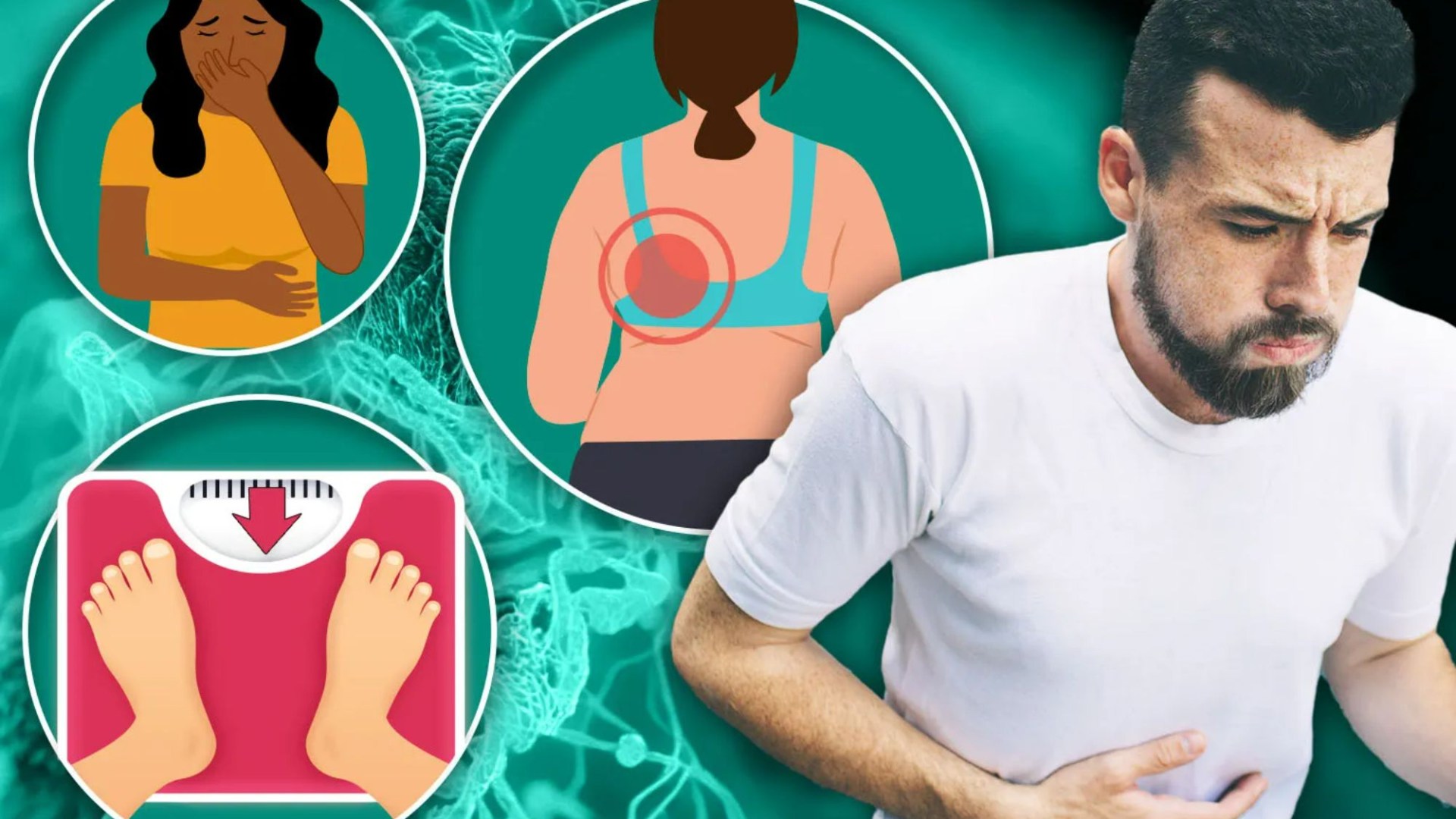A WOMAN was left blind in her right eye after a parasite burrowed into her cornea – simply from wearing contact lenses in the sea.
Brooklyn McCasland claims she got the nasty infection during a beach holiday with friends in Alabama, US, in August where she swam in the sea wearing her contacts.
10

10

10

10
The 23-year-old visited her doctor after the trip believing she had a “piece of sand” stuck in her eyeball but was told it was just a “common infection”.
However, this never cleared up and the barista reportedly continued to be misdiagnosed for more than a month – while enduring the “worst pain she’d ever experienced” and losing vision in her right eye.
She was eventually diagnosed with acanthamoeba keratitis (AK), a rare eye infection affecting two in 100,000 people in the UK.
Brooklyn was forced to quit her job and now has to “keep her eye shut all day”.
Read more on eye infections
She has to wait up to a year for her infection to heal before getting a $5,000 cornea transplant in a bid to regain her vision.
A GoFundMe page was set up by her friend, Jordan Yoder, to help raise $10,000 to go towards the 23-year-old’s transplant and support her while she’s unemployed.
Acanthamoeba keratitis is a rare parasitic eye infection affecting the cornea that’s caused by an organism – called an amoeba – usually found in bodies of water.
It can cause eye damage or even sight loss and is more common in people who wear contact lenses.
The former coffee shop worker is now warning other contact lens wearers about the horrifying occurrence – saying it can even happen from using tap water to clean contact lenses and cases.
Brooklyn, who lives in Gregg County, Texas, US, said: “It was the worst pain I’ve ever experienced. It kind of felt like glass was in your eye.
“Sometimes if I shut my eye it would feel a little bit better but sometimes it would feel worse. It was just constant pain.
“Being told not to worry about it and that my vision will come back then being told later that I wouldn’t get my eyesight back is pretty upsetting.
“I’ve got to learn how to deal with it now. It’s a big life change.
“I started wearing [contact lenses] when I was seven. I wore them everywhere: to the pool, showered in my contacts and swam in my contacts.
“I even washed my contact case with tap water to clean it out. Now I know you’re not supposed to do it but I’ve done that for forever.”

10

10

10

10
Brooklyn was prescribed antibiotics for her “common infection” but had to endure weeks of pain after it never healed.
Brooklyn said: “I thought I had something in my eye, just a piece of sand or something. I kept having people look in my eye to see if they could see anything but nobody could see anything.
“Then I started to get more pain. That’s when I went to my eye doctor.
“She looked at my eye and said she just thought it was a regular infection. She gave me antibiotic drops.
“She put me on a steroid drop. That’s actually the worst thing you can do for AK because it can make everything worse.
“She had me on antibiotics, a steroid drop, another drop for pain and then she kept saying that it was getting worse because we weren’t having the right level of antibiotic versus steroid.
“We had to find the perfect medium in order to treat the virus.
“It was hard. I had to take off work for a month.
“It was every single time I’d go and I’d be in pain and I was hoping for more answers and she’d just kept saying ‘we’ve got to find the right medium’.”
‘Permanently blind’
Brooklyn went “completely blind” in her eye after doctors tried to treat an abrasion.
Brooklyn recalled : “I came back for one of my appointments and I was in really, really bad pain and she said I had an abrasion on my eye.
“I had to wear a patch over my eye. I couldn’t put any of my drops in for two days.”
Her infection got worse during that time and continued to so despite being given more drops to try and control it.
“After she took the bandage off I was completely blind in my right eye. She said it should go away but it never did.
“I’m pretty much permanently blind in my right eye now.
“It was very scary. My depth perception when I pick up things or try to open doors is off so that’s been hard to get used to.”
What is acanthamoeba keratitis?
Acanthamoeba keratitis (AK) is an infection of the cornea, the clear ‘window’ at the front of the eye, that can be very painful.
The infection is caused by a microscopic organism called scanthamoeba, which is common in nature and is usually found in bodies of water -like lakes, oceans and rivers – as well as domestic tap water, swimming pools, hot tubs, soil and air.
Acanthamoeba organisms do not generally cause harm to humans – all we come into contact with them when we wash, swim and drink water.
But they can cause a serious eye disease if they infect the cornea.
AK is most common in people who wear contact lenses, but anyone with a corneal injury is susceptible to developing the infection.
When not treated, it can damage your eyes and cause loss of sight.
Symptoms include:
- Eye pain that’s sometimes severe
- Feeling like something’s stuck in your eye but washing your eyes doesn’t help, and you can‘t see anything stuck there
- Watery eye
- Light sensitivity
- Eye redness or irritation
- Corneas that appear cloudy, dirty or that have a ring-shaped area on their surface.
- Blurred or clouded vision – this usually happens with severe or advanced cases
Source: Moorfields Eye Hospital, Cleveland Clinic
The waitress was referred to a cornea specialist and was “relieved” to finally discover she had AK, after weeks with no answers.
Brooklyn said: “About a month and a half into everything going on and they still didn’t have anything. They were still just shooting in the dark which was really frustrating. I remember praying.
“I got a phone call and they said they’d got my results back. He said that I did have AK.
“It was a shock but also a relief to have everything answered. For so long being misdiagnosed and not knowing what it is and it getting worse and being in pain.
“I just kept telling everybody if I was in pain and knew exactly what it was and that the medications were treating it, then it would be fine.
“But being in pain and still not knowing exactly what it was was scary.”
‘Life-changing’ op
Brookyn is now waiting to have a $5,000 cornea transplant after her infection heals and has been prescribed $62,000 worth of medication which she is hoping will be covered by insurance.
She revealed the money raised from the GoFundMe page will allow her to have the transplant and cover her expenses while she is out of work.
Brooklyn: “[My doctor] said the infection could take a year to fully heal and after the infection is gone then I’ll be able to get the cornea transplant. I’m going to have a pretty big scar after all this is treated.
“That’s going to be the only way that I’ll be able to get my vision back.
How to use contact lenses safely
Looking after and using contact lenses properly is essential for keeping your eyes free from infections.
Make sure you always:
- Wash and dry your hands properly before handling your lenses
- Only wear them for the recommended amount of time
- Always have an up-to-date pair of glasses for when you take your contacts out
- Attend regular check-ups, even everything seems fine
- Get advice immediately if you have problems with your lenses like sore, red or swollen eyes
And make sure you never:
- Wear lenses, including novelty lenses, that weren’t properly fitted to your eyes
- Put water or saliva on your lenses or in your eye when you’re wearing them
- Put a dropped lens in your eye without cleaning it first
- Carry on wearing them if they feel or look bad, or if your vision blurs
- Use a lens if it looks damaged
- Sleep in your lenses (unless your practitioner says it’s OK to do so)
- Wear lenses while swimming or playing water sports
- Wear lenses in the shower or in a hot tub
- Wear someone elses contacts or share yours with anyone else
- Reuse a daily disposible lens
- Use eyedrops while wearing lenses, unless your practitioner tells you it’s safe to do so
Source: NHS
“Then it can take a year for the cornea transplant to heal. So I’ve still got a pretty long road of recovery.
“My friend set [the fundraiser] for $10,000 because I haven’t been able to work so the money that’s been raised I’m basically using to get groceries, pay my bills and live off of because my state doesn’t offer short term disability only long term disability.
“Raising enough to get the transplant would mean a ton. I can’t even really fathom it honestly.
“Not being able to see is really, really hard. I definitely took it for granted. Just day-to-day doing stuff.
“Now I don’t have eyesight, I’d do anything to get it back. It’d be life-changing for sure.”
Anyone can get it
The contact lens wearer wants to spread awareness of her experience and encourage people to be safe as ‘anybody can get it’.
Brooklyn said: “It’s weird because whenever I went to the doctor long before they had found out I had AK my doctor had said ‘do you shower in your contacts’ and I said ‘yes’.
“He said ‘yeah, some people get away with it. It’s not really a big deal’.
“That upset me, especially after finding out I did have it.
“He was making it sound like it’s not a big deal, but if I could have avoided all this pain and all this I’ve gone through and still had to go through by not showering in my contacts or not swimming in my contacts, then I wouldn’t have done it.
“I think that’s something that people don’t really realise that yes, some people get away with it but I’m someone who has worn contacts since I was seven years old and have never thought that I could get something like this and then it happened to me.
“Just because it’s a rare condition, it doesn’t mean it can’t happen to you.
“The numbers are actually going up. So people need to be careful and understand that anybody can get it.”

10

10




